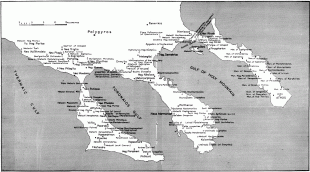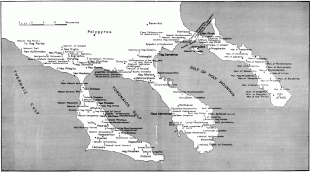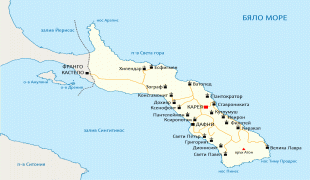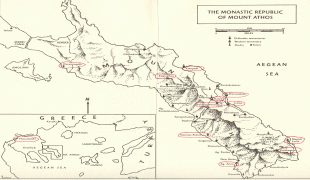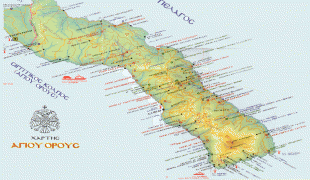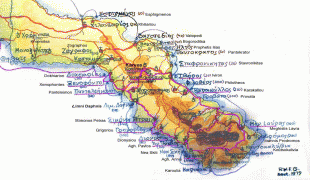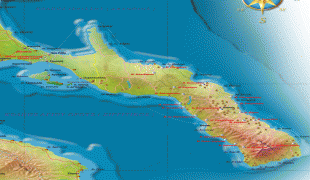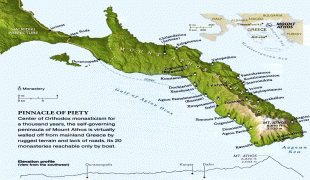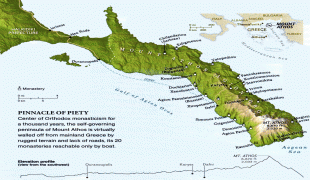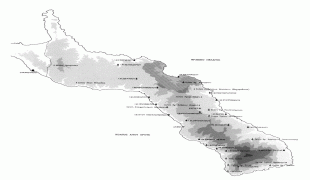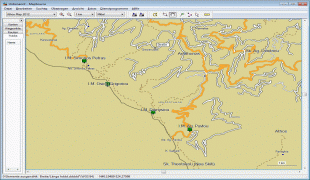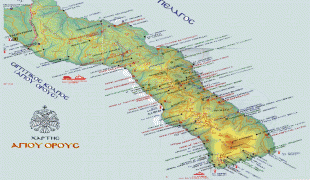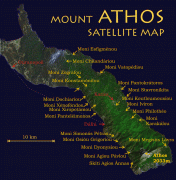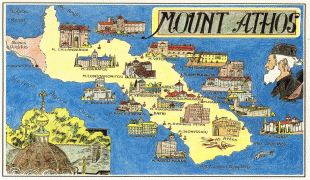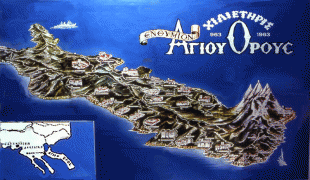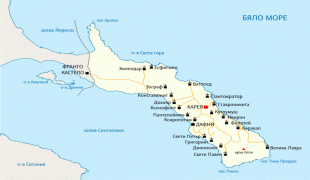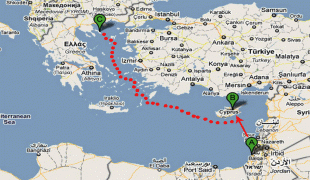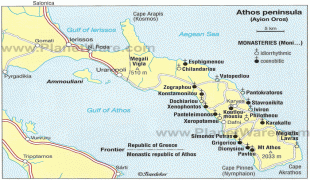Mount Athos (Mount Athos)
Mount Athos (Ἄθως, ) is a mountain in the distal part of the eponymous Athos peninsula and site of an important centre of Eastern Orthodox monasticism in northeastern Greece. The mountain along with the respective part of the peninsula have been governed as the monastic community of Mount Athos, an autonomous region within the Hellenic Republic, ecclesiastically under the direct jurisdiction of the Ecumenical Patriarch of Constantinople, while the remainder of the peninsula forms part of the Aristotelis municipality. Mount Athos has been inhabited since ancient times and is known for its long Christian presence and historical monastic traditions, which date back to at least 800 CE during the Byzantine era. Because of its long history of religious importance, the well-preserved agrarian architecture within the monasteries, and the preservation of the flora and fauna around the mountain, Mount Athos was inscribed on the UNESCO World Heritage List in 1988.
In modern Greek, Mount Athos is referred to as Oros Athos (Όρος Άθως), the peninsula as Hersonisos tou Atho (Χερσόνησος του Άθω), while the designation Agio Oros (Άγιο Όρος) translating to 'Holy Mountain' is used to denote the autonomous region of Greece governed by the monastic community of Mount Athos. In the classical era, while the mountain was called Athos, the peninsula was known as Acté or Akté. Some languages of Orthodox tradition use names translating to 'Holy Mountain', these include Bulgarian, Macedonian and Serbian (Света Гора, Sveta Gora; Svyataya Gora); and Georgian (მთაწმინდა, mtats’minda). However, not all languages spoken in the Eastern Orthodox world use this name: in Russian it is simply called Афон (Afon, meaning "Athos"), while in Romanian it is called "Mount Athos" (Muntele Athos or Muntele Atos).
The peninsula, the easternmost "leg" of the larger Chalkidiki peninsula in central Macedonia, protrudes 50 km into the Aegean Sea at a width of between 7 and 12 km and covers an area of 335.6 km2. The actual Mount Athos has steep, densely forested slopes reaching up to 2033 m. The Athos peninsula, unlike Sithonia and Kassandra, is a geological continuation of the Rhodope Mountains of northern Greece and Bulgaria.
The surrounding seas, especially at the end of the peninsula, can be dangerous. In ancient Greek history two fleet disasters in the area are recorded: In 492 BC Darius, the king of Persia, lost 300 ships under general Mardonius. In 411 BC the Spartans lost a fleet of 50 ships under the admiral Epicleas.
Mount Athos has an extensive network of footpaths, many of which date back to the Byzantine period. Many are typically not accessible to motor vehicle traffic.
In modern Greek, Mount Athos is referred to as Oros Athos (Όρος Άθως), the peninsula as Hersonisos tou Atho (Χερσόνησος του Άθω), while the designation Agio Oros (Άγιο Όρος) translating to 'Holy Mountain' is used to denote the autonomous region of Greece governed by the monastic community of Mount Athos. In the classical era, while the mountain was called Athos, the peninsula was known as Acté or Akté. Some languages of Orthodox tradition use names translating to 'Holy Mountain', these include Bulgarian, Macedonian and Serbian (Света Гора, Sveta Gora; Svyataya Gora); and Georgian (მთაწმინდა, mtats’minda). However, not all languages spoken in the Eastern Orthodox world use this name: in Russian it is simply called Афон (Afon, meaning "Athos"), while in Romanian it is called "Mount Athos" (Muntele Athos or Muntele Atos).
The peninsula, the easternmost "leg" of the larger Chalkidiki peninsula in central Macedonia, protrudes 50 km into the Aegean Sea at a width of between 7 and 12 km and covers an area of 335.6 km2. The actual Mount Athos has steep, densely forested slopes reaching up to 2033 m. The Athos peninsula, unlike Sithonia and Kassandra, is a geological continuation of the Rhodope Mountains of northern Greece and Bulgaria.
The surrounding seas, especially at the end of the peninsula, can be dangerous. In ancient Greek history two fleet disasters in the area are recorded: In 492 BC Darius, the king of Persia, lost 300 ships under general Mardonius. In 411 BC the Spartans lost a fleet of 50 ships under the admiral Epicleas.
Mount Athos has an extensive network of footpaths, many of which date back to the Byzantine period. Many are typically not accessible to motor vehicle traffic.
Map - Mount Athos (Mount Athos)
Map
Country - Greece
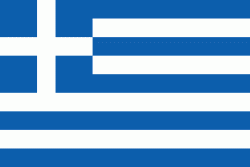 |
 |
| Flag of Greece | |
Greece is considered the cradle of Western civilization, being the birthplace of democracy, Western philosophy, Western literature, historiography, political science, major scientific and mathematical principles, theatre and the Olympic Games. From the eighth century BC, the Greeks were organised into various independent city-states, known as poleis (singular polis), which spanned the Mediterranean and the Black Sea. Philip II of Macedon united most of present-day Greece in the fourth century BC, with his son Alexander the Great rapidly conquering much of the ancient world, from the eastern Mediterranean to the North Western parts of India. The subsequent Hellenistic period saw the height of Greek culture and influence in antiquity. Greece was annexed by Rome in the second century BC, becoming an integral part of the Roman Empire and its continuation, the Byzantine Empire, which was culturally and linguistically predominantly Greek.
Currency / Language
| ISO | Currency | Symbol | Significant figures |
|---|---|---|---|
| EUR | Euro | € | 2 |
| ISO | Language |
|---|---|
| EN | English language |
| FR | French language |
| EL | Greek language |






